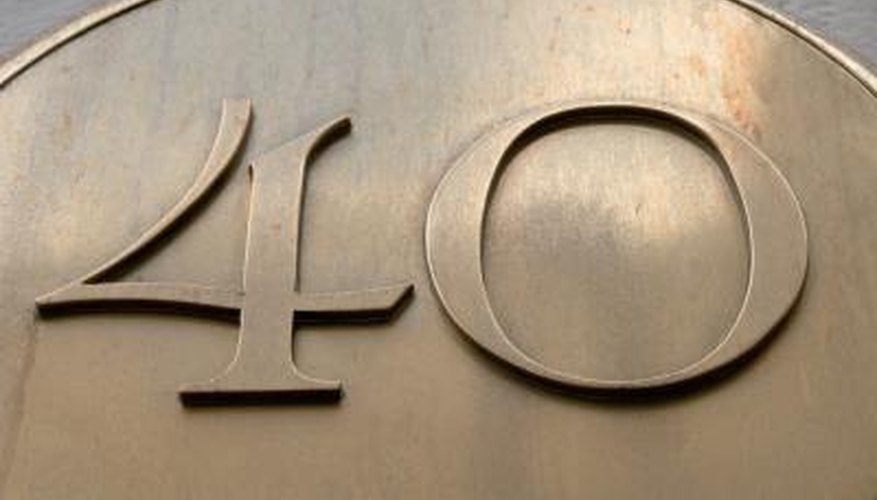Street numbering allows you to identify each building on a street. The street number or building number is typically included the postal address, as in "123 Columbus St." "123" is the street number. In both the U.S. and Canada, buildings are usually numbered with odd numbers on one side of the street and even numbers on the other. The street number can be one single digit or five or more digits depending on the street and city numbering scheme.
- Street numbering allows you to identify each building on a street.
- The street number or building number is typically included the postal address, as in "123 Columbus St." "123" is the street number.
Look at both sides of the street. Walk or drive slowly down the street and stop for a minute to look at the numbers on each building. If you are driving, pull over so you do not block traffic. Notice if the numbers are going up or down, even or odd and in what increments: twos, tens, hundreds or another range.
Estimate the location of the building based on the building's street number and the street numbers of nearby buildings. The number is typically displayed on the front exterior of the building. Look on both sides of the mailbox, post, wall or at the end of driveways. Buildings with multiple apartments or condos might only display the street number of the building and not the number of the apartment. Apartment numbers that are not found on the exterior of the building are found directly on the front door of the apartment or in the directory in the building's lobby.
Ask for help if you cannot locate the building or if the street numbers do not ascend or descend in a logical way. Ask a store clerk, a neighbour or a mailman if you see one. They will be able to assist with any further questions or directions. Or, find a phone book, which usually has maps of the area, a petrol station or a place to go online and search for directions. Modern technology has given many people GPS mapping technology on their hand-held devices or phones; these devices can also get you directions to a particular building.
- Estimate the location of the building based on the building's street number and the street numbers of nearby buildings.
- Ask for help if you cannot locate the building or if the street numbers do not ascend or descend in a logical way.
TIP
Helping people find your street number is easier by using numbers at least three to four inches high. Use a colour scheme to create contrast so the numbers are easy to read. The numbers should be visible from both sides of the street and mounted on a stable surface that will not be blocked by landscape foliage, snow banks or newspaper boxes. Cursive script numbers or words should be avoided, as they are more difficult to see and read, especially at night. Display the street number on the building and at the end of the driveway, especially for long or shared driveways. Look for your route on a map or online before you leave for your destination. Print the map or directions if possible.
